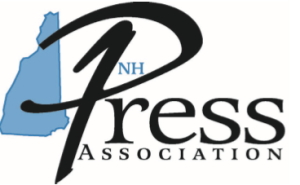
Thanks to the foresight of several and environmental and conservation groups there are now hundreds of access points and over 50 primitive campsites along the river. The Connecticut River Paddlers’ Trail,
www.connecticutriverpaddlerstrail.org, is a series of primitive campsites and river access points from its headwaters in Pittsburg, New Hampshire south to Long Island Sound. A variety of organizations assist with trail planning and development. With the support of the community, work continues to protect the river corridor, construct new campsites and portage trails, and expand the Paddlers’Trail from source to sea.
In the early 1990s, the Upper Valley Land Trust was instrumental in establishing formal river campsites in Vermont and New Hampshire. Since their initial effort, over twenty other groups have joined together to developed additional campsites and completed access improvement projects. As a result, the river provides one of the northeast's best options for multi-day paddling trips, with over fifty camping destinations and over 150 access points.
You may remember I wrote about the Upper Valley Land Trust’s efforts and some of the local campsites and their volunteer maintainers back in early July.
The Connecticut River Paddlers' Trail is managed as a loose collaborative effort of partner organizations and community members who aid in trail planning and development, building and maintaining campsites, improving access points and portage trails, and disseminating information to visitors. The Vermont River Conservancy currently coordinates this effort.
I have had an affinity for the Connecticut River all my life. I grew up on a hill near the current Bradford rest areas on I-91 about a mile and a half from the river and looked down on it and into New Hampshire every day.
I have canoed, boated and fished it countless times. I have even searched for overdue boaters and drowning victims and did s couple of recoveries while I was with the Vermont State Police as we often answered requests for help from New Hampshire law enforcement and I was most often the one tasked to respond with the VSP boat.
I have also served many years on the three commissions Congress created that deal with the river. When the Connecticut River Atlantic Salmon Commission started in the late 70s, I became the citizen representative for Vermont and a few years later when I became Commissioner of Fish and Game, the government representative. The commission has members from Vermont, New Hampshire, Massachusetts, Connecticut, the U.S. Fish and Wildlife Service and the National Oceanic and Atmospheric Administration Fisheries.
In the 90s I was appointed to the Connecticut River Joint Commissions which has members from New Hampshire and Vermont. I served on that commission for 20 plus years and chaired it a few years.
In 2000 I was appointed to the Connecticut River Flood Control Commission which has three representatives each from Vermont, New Hampshire, Massachusetts and Connecticut. I am still a member and am currently serving a second term as chair.
Many Changes To Fall Hunting Regulations In New Hampshire
The New Hampshire Fish and Game Department announced changes to a variety of hunting related rules, which may include amendments to current ones, beginning with the 2025-2026 seasons. Be sure to check the regulations before heading out after September 1.
During the archery season, deer may be harvested by crossbow by anyone holding an archery license in the following Wildlife Management Units (WMUs): D2W, G1, G2, H1, H2, I1, I2, J1, J2, K, L, and M.
Youths from any state may now participate in New Hampshire’s youth deer hunting weekend with a properly licensed adult.
The fall turkey shotgun season will be closed in WMUs G and I2. WMU I1 will no longer be open for the harvest of a second spring turkey. Shot size 9.5 (in TSS) is now allowed for the harvest of turkeys.
Hunters wishing to take an additional bear in WMUs C1, D2, E, or F must now register their first bear prior to harvesting a second one.
Air rifles may now be used for the harvest of moose, deer, and bear. Air rifles used for the purpose of take shall be charged from an external high-compression power source and meet the following minimum criteria: Be 0.35 caliber or larger and produce at least 400 foot-pounds of energy at the muzzle for taking deer and bear; Be 0.45 caliber or larger and produce at least 400 foot-pounds of energy at the muzzle for taking moose; For use in taking small game, air rifles shall be not less than .22 caliber and shall deliver not less than 12 foot-pounds of kinetic energy at the muzzle.
In towns with special rules, rifles (long guns) chambered in a straight-walled pistol cartridge of .357 caliber or greater are now allowed. For the purposes of this law, a pistol cartridge will be considered any cartridge available in a pistol platform provided it is of .357 caliber or greater. For more details or to reference a list of towns with special rules, see page 22 of the 2025-26 New Hampshire Hunting and Trapping Digest by visiting https://www.eregulations.com/newhampshire/hunting.
In towns with special rules, pistols (handguns) permitted are now .327 Federal Magnum and any caliber .357 Magnum and greater. For more details or to reference a list of towns with special rules, see page 22 of the 2025-26 New Hampshire Hunting and Trapping Digest by visiting https://www.eregulations.com/newhampshire/hunting.
The last weekend in September is now designated as New Hampshire's Youth Hunting Weekend for pheasant. Participants must be 15 years of age or younger and shall be accompanied by an adult 18 years of age or older who is licensed to take pheasants. Accompanying adults must possess a current hunting license and pheasant permit and are prohibited from carrying a firearm, bow and arrow, or crossbow that could otherwise lawfully be used for hunting. Adult participants may accompany no more than two youths, and all youths must comply with all other requirements for the harvest of pheasant.
Any furbearing animal taken by hunting must be registered within 24 hours of take through the completion of all required fields in an online registration report using the link available at www.wildlife.state.nh.com. Furbearers with a hunting season include mink, fisher, raccoon, fox, coyote, opossum, weasel, skunk, and muskrat. Hunters who register a furbearing animal must maintain proof of registration by recording the confirmation number of each harvested animal on, or kept with, their hunting license. In addition to registration, all fisher harvested must be sealed and the lower jaw must be submitted at the time of sealing.
Bits and Pieces
The Vermont Fish and Wildlife Department reminds hunters that waterfowl hunting blinds may not be placed on or in the waters of the state earlier than the first Saturday in September.
Anyone who places a blind must have their name and address permanently and legibly shown on the blind by waterproof paint or rustproof tag.
Placement of signs for the purposes of claiming waterfowl blind locations has no basis in law and is unenforceable.
***
The New Hampshire Fish and Game Department will hold a public hearing on Thursday, August 21, at the Department’s Headquarters, located at 11 Hazen Drive in Concord. The hearing will begin at 6 p.m. The purpose of the hearing is to gather public input on proposed rule changes related to freshwater fishing, specifically concerning tournaments, lake trout, salmon, and bass in New Hampshire.
This public hearing is being held to provide anglers with an opportunity to express their interests and concerns regarding the direction of the proposed fishing rules. The public is encouraged to participate and share their feedback.
The proposed changes can be viewed on the Department’s website ahead of the hearing by visiting www.wildlife.nh.gov/event/public-hearings-fisheries-rule-updates.
***
As the summer ends, the New Hampshire Fish and Game Department is asking for the public’s help in monitoring the wild turkey population by reporting brood sightings before August 31. If you observe groups of turkeys with poults (juvenile birds), report your sightings by visiting www.wildlife.nh.gov/wildlife-and-habitat/wild-turkeys-new-hampshire/turkey-surveys.
***
Mark Breen reports in the Fairbanks Museum's Skywatch Almanac that on
August 23, 1988: “An early frost dropped temperatures to 32 in Chelsea, VT, and 30 in West Burke, VT. “
Parting Shots
Tune in to WYKR 101.3 FM or 1100 AM on Thursday at 6 p.m. for The Outdoor Edge. Thoughts on the Out-of-Doors airs as a segment of the program. Amy Baker is my guest who will share some of her many hiking adventures in the White Mountains and around the world.
***
I just learned of another hiker whose feat impressed me but in no way encouraged me to try anything like it.
Tori Constantine, a 29 year old Plainfield, NH native set the record for the fastest time for an unsupported trek by a female hiker on Vermont’s Long Trail, covering it in 5 days, 19 hours and 29 minutes ending on August 5.
The previous fastest known time in the female unsupported category set in 2021 at 6 days, 11 hour, and 33 minutes for the 272-mile Long Trail.
She is a nurse at the University of Vermont Medical Center, who now lives in Waterbury.
As part of her unsupported attempt, the record-breaker had to carry everything she needed, such as food, sleep infrastructure and a battery bank to charge the devices that tracked her attempt through GPS for the entirety of the hike. She was only able to replenish water from natural sources.
Syndicated columnist Gary W. Moore may be reached by e-mail at gwmoore1946@icloud.com or at Box 454, Bradford, VT 05033.
copyright 2025 Gary W. Moore
Have a story?
Let's hear it!
(802) 757-2773
(603) 787-2444
news@thebridgeweekly.com




